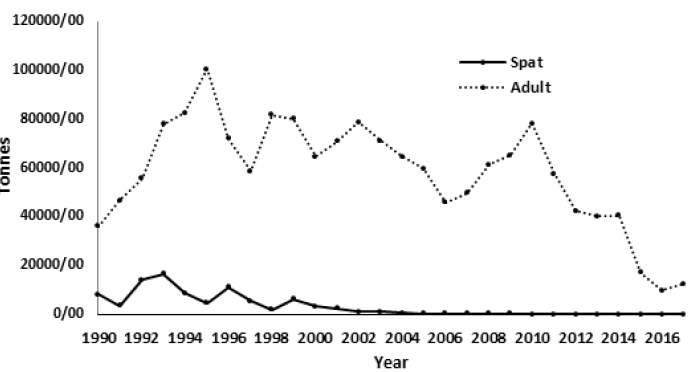Preliminary study on the growth development of blood cockle (Tegillarca granosa) by using different substrates in the hatchery system
DOI:
https://doi.org/10.17762/sfs.v7i2.121Keywords:
Blood cockle culture, Tegillarca granosa, H atchery, Growth development, SubstrateAbstract
Culturing of bivalves in the hatchery is the most popular technique for aquaculture that promotes a healthy bivalve's production, where the animal would be less exposed to pollution from human activities. The increase of industrial and agricultural waste along the coastal region has altered the environment, hence affecting the growth and survival of aquatic organisms, particularly clams which is one of the sources of protein to coastal communities. Due to the high demand for blood cockles and drastic change in term of production from culture site, the price of blood cockle per kilogram has increased. Thus, this study aimed to observe the growth development of blood cockles (Tegillarca granosa) using different substrates in a hatchery system. In this study, adult cockle from Kuala Juru, Penang on the northern Straits of Malacca were collected from wild and maintained in hatchery system at Centre for Marine and Coastal Studies (CEMACS), Universiti Sains Malaysia (USM). 50 individuals of adult cockle were used for each treatment. The growth characteristics, such as weight, length, thickness, and height of the cockle samples were monitored in both sand and mud substrate experiment tanks until the end of their survival. Generally, both substrates showed an increment in the growth characteristics from initial measurement. Increase in growth characteristics of cockle samples in the sandy experimental tank were, 3.919±0.717 g in weight, 22.90±1.72 mm in length, 15.30±1.69 mm in thickness and 17.40±1.87 mm in height at the end the experiment. Meanwhile, cockle's culture in mud substrate showed growth of an average weight of 7.410±2.022 g, 27.40±2.98 mm in length, 17.60±1.94 mm in thickness and 20.60±2.06 mm in height. Furthermore, cockle samples in sandy substrate particularly showed a higher survivability of up to 4 months, compared to mud that only survived for two months. Therefore, this preliminary study suggest that blood cockle could be cultured using a sand type substrate as an alternative to mud in the hatchery system.










